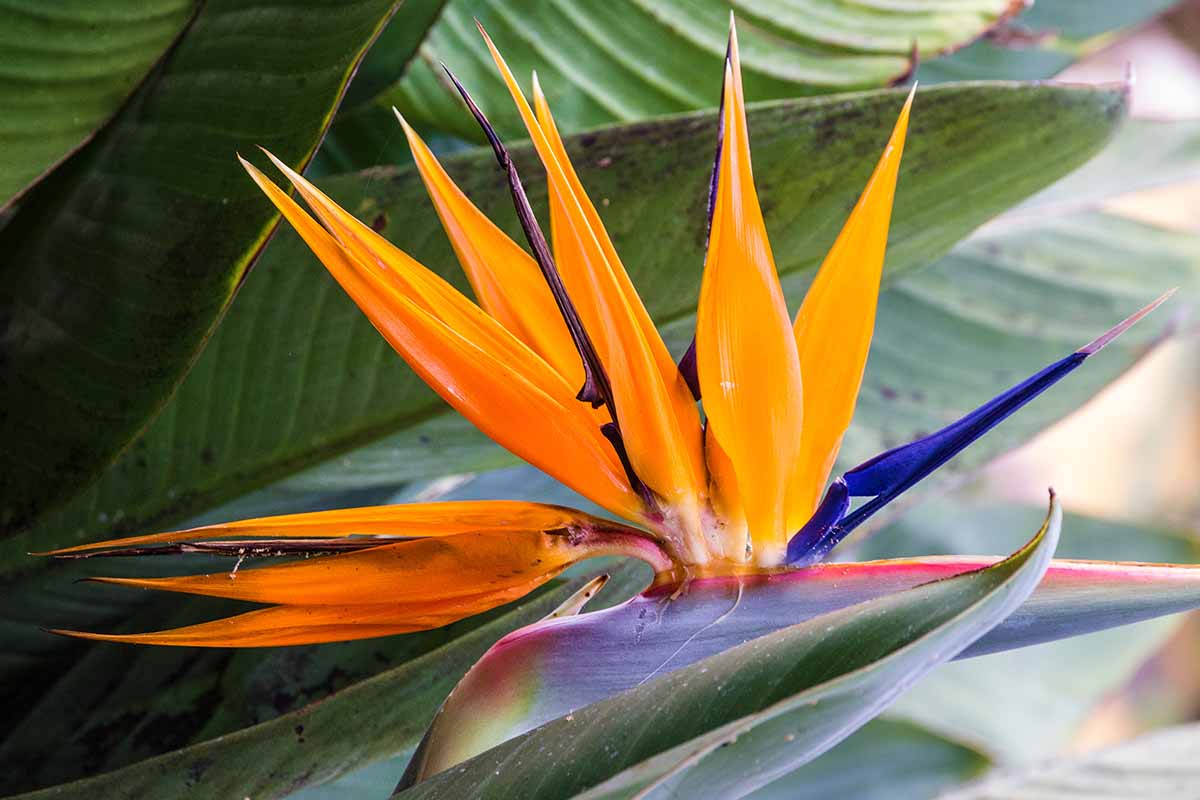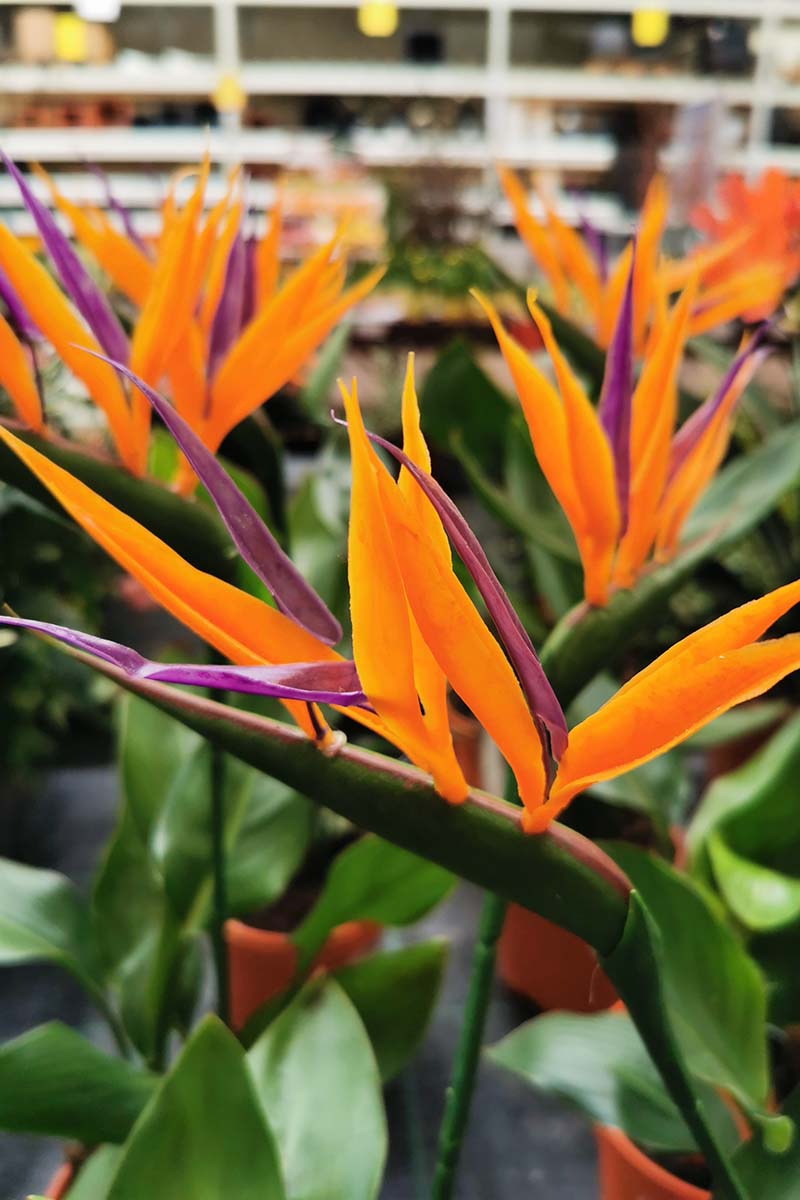[ad_1]
For those who’re rising fowl of paradise vegetation (Strelitzia spp.) there could come a time whenever you need to transfer it to a special location in your panorama.
Maybe you want your vegetation to make the change from in-ground to in a container, or vice versa.
Transplanting is extra than simply digging up a plant and plopping it again down into a special gap. The method requires timing, method, and TLC to achieve success. To not point out discernment in deciding whether or not or not your plant even wants to be transplanted to start with.

We hyperlink to distributors that will help you discover related merchandise. For those who purchase from one among our hyperlinks, we could earn a fee.
In our information to rising fowl of paradise, we focus on learn how to domesticate these tropical beauties in your panorama. On this article, we’ll discuss when and learn how to transfer your fowl of paradise vegetation.
Right here’s what we’ll be speaking about:
Transplanting Fowl of Paradise Crops
Causes for Transplanting
To start with, why would you need to transplant your fowl of paradise? There are a selection of the explanation why it’s possible you’ll want to transfer your vegetation.
Maybe you purchased a fowl of paradise from an area nursery or have one shipped to you from an internet vendor, transplanting is what you’ll do to place it within the floor or into a brand new container.
Otherwise you’re shifting home, and must pop your in-ground specimen right into a pot to take it with you.

When established Strelitzia vegetation turn out to be overcrowded and don’t have sufficient house to develop, their development could also be stunted they usually could exhibit indicators of stress like leaves turning yellow.
However by transplanting them into websites with extra elbow room, they’re extra more likely to attain their anticipated mature dimension.
Generally, vegetation simply find yourself in a suboptimal spot that doesn’t foster wholesome development. Perhaps the native microclimate is just too sizzling or too chilly, or there’s not sufficient daylight. Or maybe the soil doesn’t drain effectively, or it lacks the vitamins to gas wholesome development.
For those who catch this early sufficient and transfer your specimen to a greater location, it ought to begin to develop that significantly better.
You might also want to transfer your vegetation round purely for aesthetic causes – botanical gardens and different high-end landscapes do that form of factor on a regular basis.
When to Transplant Fowl of Paradise
So that you need your vegetation moved, however earlier than you begin digging you’ll must schedule it on the correct time.

These vegetation do greatest whenever you transplant them in late spring or summer time.
As Strelitzia species are delicate to root disturbances, you need to make the transfer in the course of the vibrant, heat circumstances of the rising season, which supplies them ample alternative to turn out to be reestablished earlier than winter rolls round.
Prepping the New Website
Whether or not your transplant goes outside within the floor in a brand new location or right into a container, you’ll want to arrange forward of time.
Outside specimens will should be in USDA Zones 9 to 12 to outlive year-round, until you’ll overwinter your Strelitzia indoors.

For birds of paradise grown indoors, daytime temperatures of 70 to 75°F and nighttime temperatures of fifty to 55°F are greatest. Arrange humidifiers, trays of water, and group vegetation collectively to spice up the ambient humidity as much as 60 p.c if doable, and also you’re golden.
In-ground specimens will want organically-rich, well-draining soil with a loamy texture and a pH of 5.5 to 7.5.
A soil texture take a look at will inform you if the soil wants any amendments to assist with drainage or the addition of natural matter. Loam or sandy loam is greatest, because it strikes a good stability between draining extra water and retaining vitamins.
Natural matter may be elevated by working a supply of humus into the soil, equivalent to compost or well-rotted manure. You are able to do this by making a layer on prime of the soil a pair inches thick, then working it in with a hoe or tiller.
As for the pH, some pH strips will let you understand in case your soil pH is outdoors of the really helpful vary.
Increased pH ranges may be made extra acidic with functions of elemental sulfur or aluminum sulfate whereas low pH ranges may be sweetened with limestone, baking soda, and even eggshells.
A full solar to partial shade location is greatest, so plan your planting websites accordingly – don’t put them beneath a shade tree, for instance. Indoor vegetation ought to go close to vibrant, sunny home windows.
In case you are digging up your plant and placing it in a container, you’ll want to pick a vessel that enables no less than an inch or two of house between the perimeters of the basis mass and the perimeters of the pot. It’s essential to be sure that the container has a number of drainage holes within the backside.
Potted vegetation would require a soilless medium that retains moisture, but permits the surplus water to empty away. A half and half mixture of peat and perlite works effectively, however loads of business merchandise get the job accomplished.
The best pot for a fowl of paradise is sturdy, has drainage holes on the backside, and is barely bigger than the basis system of your transplant. If the diameter of your container isn’t no less than an inch or two wider than the roots, it’s too comfortable of a match.
Digging Up and Replanting
For those who haven’t already prepped the brand new planting websites, ensure you do this earlier than you begin digging.
You’ll additionally need to prepared your alternative of digging software. For further credit score, sterilizing it with isopropyl alcohol can preserve the unfold of pathogens to a minimal.

Inside the 24 hours previous to transplanting, water your to-be-transplanted specimens deeply. This loosens up the soil making it simpler to dig, and ensures the roots are well-hydrated forward of their transfer.
Use a shovel or spade to dig a circle round your transplants, as deep because it takes to get beneath the basis system. This’ll most likely be a couple of foot deep and vast, although this can rely fully on the dimensions of the plant.
A sharpened spade turns out to be useful right here for severing inaccessible roots from the encircling soil.
Ideally, you need to be capable to squat down, get your fingers or a shovel beneath the basis ball, and haul the plant outta there, assuming you’re not shifting one of many bigger tree-like species.
In the event that they’re too large so that you can transfer by your self, then these are greatest moved by the professionals with their large ol’ digging machines and legal responsibility insurances.
Containerized plantings could not want a lot digging. Merely breaking apart the media with a soil knife or your fingers could also be all that’s required to take away it from its container.
As soon as the plant is faraway from the bottom or its container, you possibly can divide your fowl of paradise if needed earlier than replanting.
Now, it’s time to dig new holes, or put together your containers in case you’re potting up. Dig as deep as you want in order that the dimensions of the outlet is deep sufficient to accommodate your entire root system, and an inch or two wider.
Combine some compost or well-rotted manure into the soil you take away from the outlet in case you didn’t amend it forward of time.
Then, rigorously transfer your transplants into their new properties. Backfill the holes and deeply water your specimens. When you’ve got further dug-out soil, you should utilize it to fill within the elements of your backyard the place your birds of paradise used to be.
Aftercare Suggestions
After transplanting, you’ll need to preserve the soil surrounding their roots evenly moist for no less than three months, after which level your vegetation ought to turn out to be established and begin rising new roots and shoot tissue.
As soon as they’re established you possibly can maintain off on watering till the highest three inches of soil dry out.

For those who transplanted in summer time slightly than spring, then preserve an eye fixed that your transplants don’t dry out – this will occur rapidly within the warmth of summer time.
As soon as the vegetation are established you possibly can fertilize in-ground specimens with natural matter equivalent to compost or well-rotted manure each three months or so.
Container-grown vegetation will want extra frequent fertilizing, however make sure to wait till they’re correctly established and displaying indicators of latest development earlier than feeding.
Be taught extra about learn how to fertilize Strelitzia in our information.
Can’t Transplant? Not Anymore
Until you’re rising a behemoth tree-like species, transplanting your Strelitzia vegetation is a fairly easy enterprise.
Whether or not you’re digging it as much as deliver indoors for the winter or shifting home, you possibly can fairly simply dig up your specimens and replant them in a special location – or in a container.
Are you rising Strelitzia vegetation? Have you ever ever wanted to maneuver them? Tell us within the feedback part beneath!
And for extra details about rising birds of paradise in your panorama, have a learn of those guides subsequent:
[ad_2]



